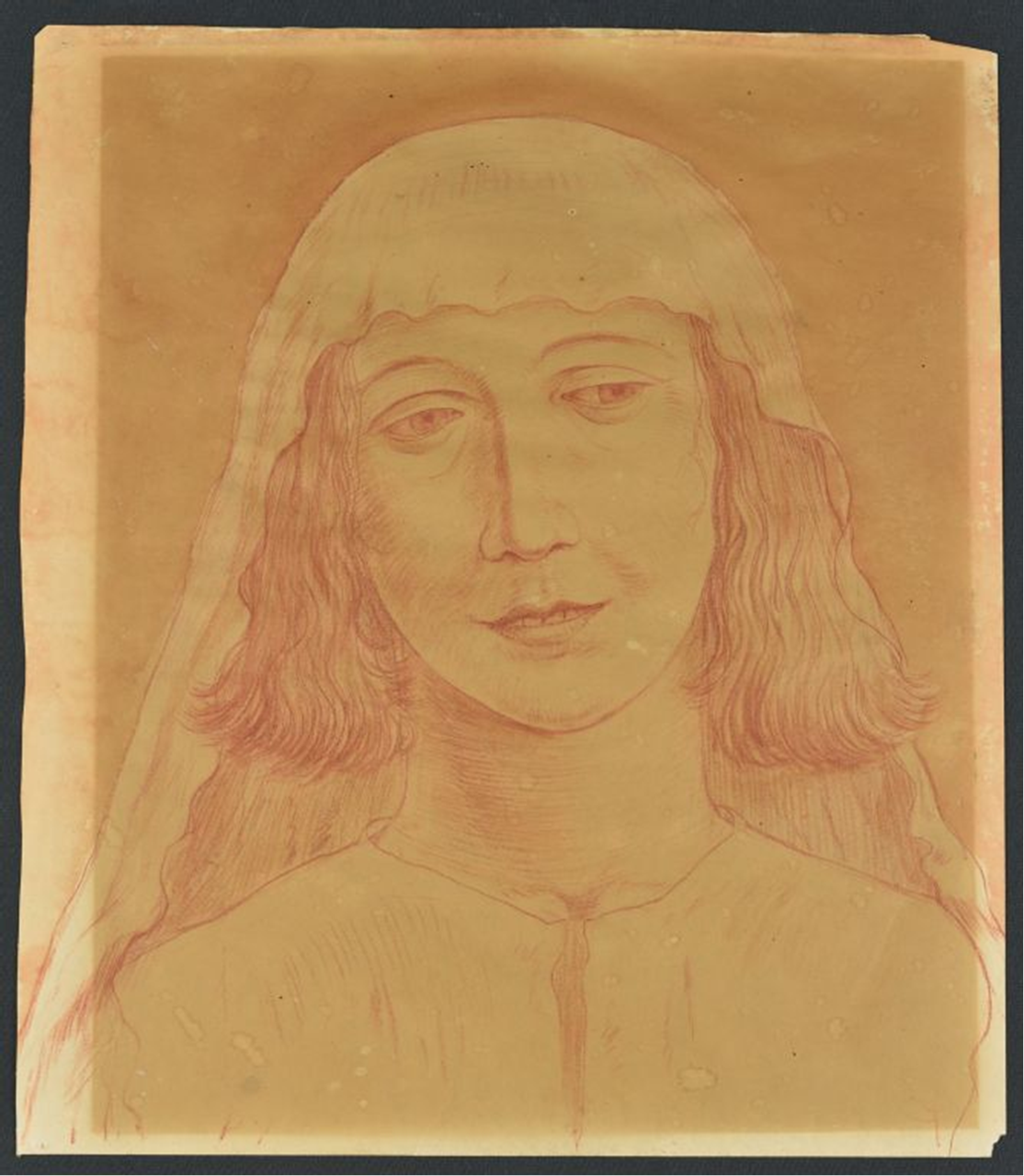The New Brunswick Museum has enhanced its representation of renowned New Brunswick artist Miller Gore Brittain (1912-1968) through the generous donation of Wamae (Matthew) Gichuru, grandson of Kjeld and Erica Deichmann. As shown in Image 1, this significant acquisition is a drawing titled Mary Magdalene, created between 1935-1940 using sanguine (red chalk) and watercolour wash on wove paper (possibly newsprint), measuring 38.3 × 33.5 cm.
Expanding the Brittain Collection
The New Brunswick Museum currently houses sixty-three works by Miller Brittain, including an important series of portrait drawings of prominent Canadians (mostly New Brunswickers) commissioned by Dr. John Clarence Webster between 1939 and 1942. The museum collection also contains eleven cartoons from 1941 and 1942 that served as the final working drawings for an ambitious Saint John Tuberculosis Hospital mural project that unfortunately was never completed.
The Identity of Mary Magdalene
According to Anneke Deichmann Gichuru, daughter of Kjeld and Erica Deichmann, this drawing is believed to represent the biblical figure of Mary Magdalene. The model for this work was likely Martha Collins Schleit (1916-2002), one of Brittain’s friends, who also posed for another New Brunswick Museum work titled Martha (1996.42.4), a 1939 painting that Schleit herself donated to the museum in 1996.
Artistic Significance
This work is particularly important as it foreshadows Brittain’s preoccupation with biblical themes during the late 1940s and 1950s. The drawing demonstrates Brittain’s exceptional draftsmanship through its simple yet confident execution. The piece features the red chalk that Brittain favored throughout his career, along with an unusual wash treatment of the background that appears in only a few of his other works from this period.
Portraiture, or more precisely the human figure and especially the head, was a major subject throughout Brittain’s artistic career. Originally in the collection of Kjeld and Erica Deichmann (whom Brittain also drew in 1939), this work brings together many aspects of an extremely important episode in New Brunswick art history.
Conservation Considerations
The condition of this work merits some discussion. The drawing shows discoloration in the rectangular area of the mat window, where the poor-quality paper was exposed to light. It is also possible that an acidic backing from the original matting and framing may have affected the paper, or Brittain himself might have used a fixative that caused this change to the image.
Despite these conservation concerns, this work provides an invaluable example of Brittain’s materials and techniques, helping scholars and conservators better understand his working methods and suggesting approaches for the care of his works in the future.
Miller Gore Brittain: A New Brunswick Master
Miller Gore Brittain stands as one of New Brunswick’s most important artists, whose work spans portraiture, biblical themes, and social commentary. This addition to the New Brunswick Museum collection strengthens the institution’s ability to represent the full breadth of his artistic development and technical approaches, particularly during his highly productive pre-Second World War period.




